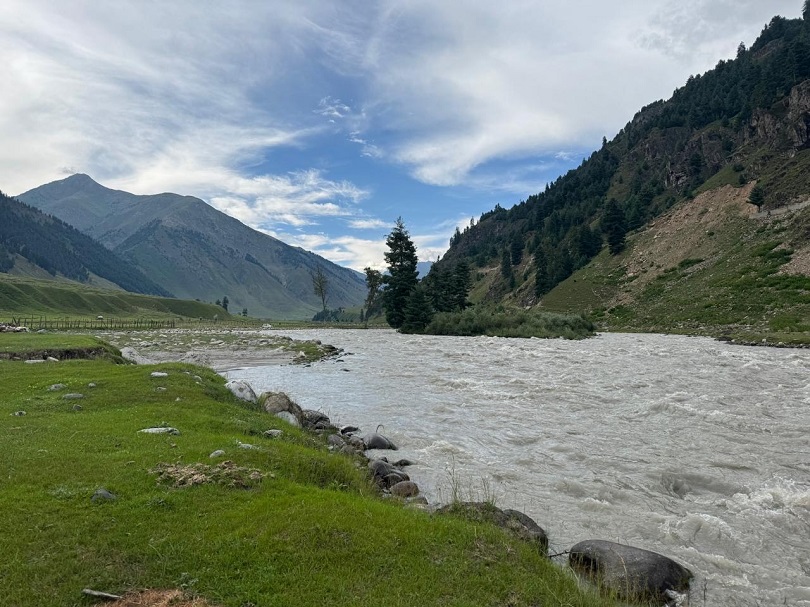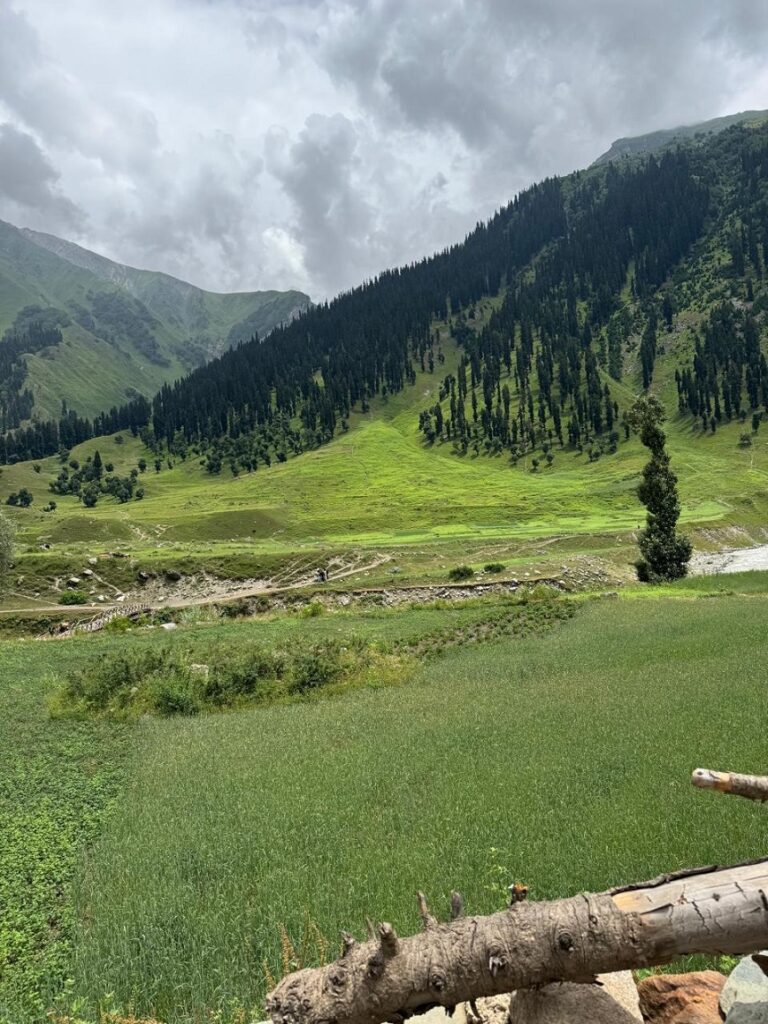
By Dr. Muhammad Sameer Shafi Siddiqui
From times immemorial, the professional herdsmen of Kashmir, popularly known as Chopans, have been engaged in the practice of taking the herds of cattle and sheep belonging to their native village men and to those of their adjacent catchments to the high altitude grazing fields during summers. After returning the herds back to their owners, just before the onset of autumn, these Chopans demand something in cash or kind from them in lieu of their services. It is a customary practice still in vogue with many village dwellers in Kashmir that once they send off their herds to the far off grazing altitudes (Nai or Neur in Kashmiri), they occasionally pay a visit or two themselves to these grazing areas to ensure the wellbeing of their herds kept under the supervision of Chopans. The owners of these herds often take the sacks of salt alongside so as to keep their herds robust; a practice commonly known as ‘noon deun’, that is fetching salt to one’s herds in the high altitudes.
So it happened that I too along with my accomplices thought of fetching salt to my herds, which are taken annually by our local Chopan to the lush green grazing altitudes of Wadwan. Usually it takes us days or even a week to travel on a horseback to Wadwan, one of the remotest tehsils of District Kishtwar from our native township of Aishmuqam situated in Anantnag. Traversing the distance through tough terrain and camping in the lush green meadows of PoharPajen, Langnai and other camping sites Enroute, we used to reach the Wadwan valley, every time awestruck anew by the grandeur and glory of the nature throughout. But this time we didn’t mount our horses and instead decided to go by road because of certain unavoidable constraints.

Leaving behind the township of Anantnag in the wee hours of morning, we drove through the villages of Kokernag, Larnoo, Gouddraman, and Matigawran and thereupon moment by moment we were being transported into an aura of simplicity and hassle freeness while peeping into the early morning village life through the haze of the mist all around. The serpentine road ahead carved out of difficult mountainous terrain eventually leads the travellers to the scenic splendour of Margan Top, a mountain pass located approximately at an altitude of 14000 ft above the sea level and some seventy odd kilometres from the district headquarters of Anantnag. A treacherous trek of two to three hours from the Margan pass eventually leads one to the panoramic view of four adjacent lakes, popularly known as ChoharNag. Although we were longing to behold the spectacle, we were more concerned about our early arrival in Wadwan so as to make the necessary camping arrangements there.
Margan Top is considered to be the gateway for Wadwan Valley and after taking a brief halt there, we began to descend the serpentine curves towards the breathtaking Wadwan Valley. The entire route is managed through the ridges and passes of the mighty Himalayas with the aroma of the deodar forests hanging heavy in the air. As soon as we were compromising with the last bends and curves of the road leading to Wadwan, we got a bird’s eye view of Intian, the first and foremost hamlet of the Wadwan Valley.
The hamlets of Wadwan are sparsely populated, remotely located and interspersed by lush green meadows, mighty ravines and rivulets. Although most of the villages have been connected through roads and some are still being connected, yet the most common phenomenon beheld throughout can be described in Thomas Hardy’s phrase as “Far from the Madding Crowd”. Most of the houses are built of stone and wooden logs and most of the courtyards are marked by wooden fences, yet concrete is slowly but visibly replacing the age-old architectural patterns. The mobile and internet signals are largely erroneous yet the youth appear to be very much enthusiastic about being connected to the outer world. No doubt the notions of modernity are creeping in fast into their natural settings, yet one can definitely feel that their outlook and behaviour is still free from the aberrations of postmodern absurdism, with the majority of people proudly clinging to pastoral and agrarian traditions.
Anyways, after staying overnight at Kaawyard; the vast camping ground in the Wadwan Valley adjacent to the Marasudar river, we started our journey early in the morning and after trekking up throughout the day we reached Purmandal, one of the highest grazing altitudes adjacent to Wadwan. Once reaching our destination we were warmly greeted by our village Chopan and his family. Infact the Chopans are among the most hospitable people one comes across and even strangers passing by their dhoks (temporary hutments) don’t go unattended. For newcomers to Wadwan, the green coloured homemade bread (Trombeh pholek in Kashmiri), which tastes a bit sour, is always a novelty to cherish and after hosting multiple tea parties and hearty feasts by some Chopan and Bakerwal families in our honour, and more importantly after duly ascertaining the wellbeing of our herds, we descended the Purmandal heights back to the Wadwan Valley. The steep trek to and fro had taken a toll of our physical strength, so before going home we considered relaxing for a day or two. So it was decided to have a bath at the hot springs of Marwah.

Marwah (Madew in Kashmiri parlance) is another remotely located tehsil adjacent to the Wadwan Valley and is famous for its hot water spring, popularly known as ‘tata pani’, whose water is believed to have many curable properties. People, mostly the village folks across Kashmir, come to take a bath at the hot spring of Marwah, especially in the autumn season after harvesting their crops. From ancient times, these hot water springs of Marwah and many other places like Kalakote in Rajouri and Deng in Ramban have served as natural spas for the gentry and the peasantry alike.
We drove approximately 30 Kilometres from Wadwan and thereupon travelling through a pony trek for an hour or two, we reached the hot springs of Marwah. After taking a dip in the hot and bubbling waters we really felt relaxed both physically as well as mentally. Thus refreshed and rejuvenated, we reached our homes back with the vivid and fascinating memories enroute.
- The author is a spiritual guide and patron of Sufi Khanqah in South Kashmir
Follow this link to join our WhatsApp group: Join Now
Be Part of Quality Journalism |
Quality journalism takes a lot of time, money and hard work to produce and despite all the hardships we still do it. Our reporters and editors are working overtime in Kashmir and beyond to cover what you care about, break big stories, and expose injustices that can change lives. Today more people are reading Kashmir Observer than ever, but only a handful are paying while advertising revenues are falling fast. |
| ACT NOW |
| MONTHLY | Rs 100 | |
| YEARLY | Rs 1000 | |
| LIFETIME | Rs 10000 | |











